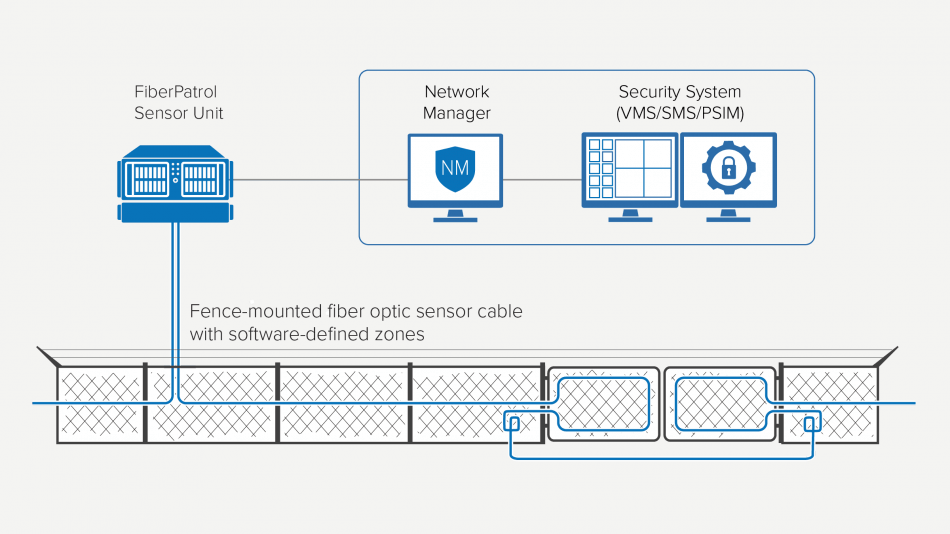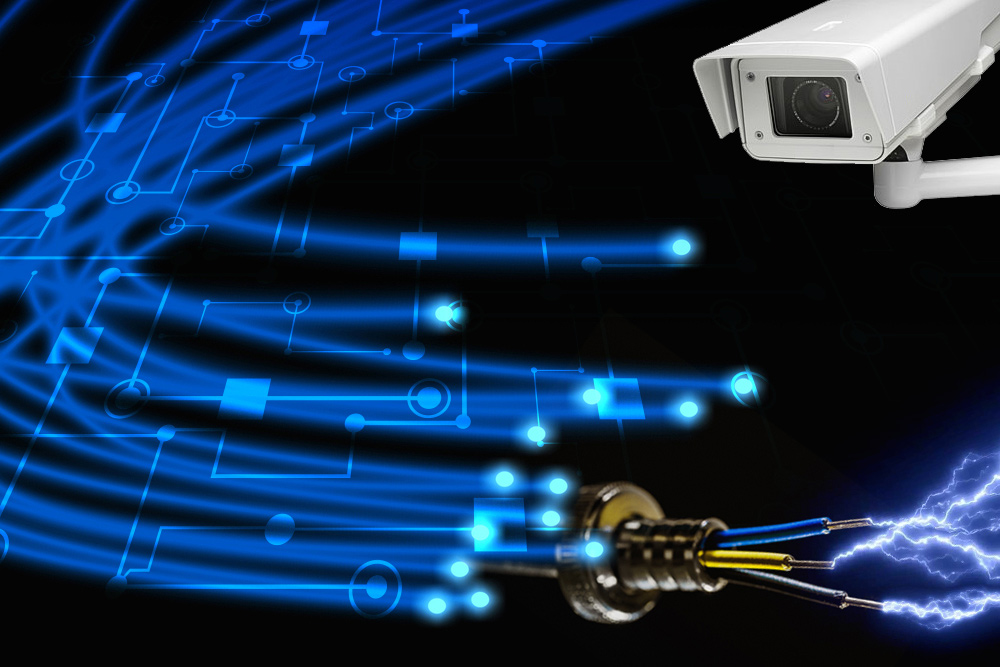Enhance Your Security With Advanced Fiber Optic Security Systems
In a period where safety and security is extremely important, advanced fiber optic security systems offer a compelling service for improving safety and security throughout different atmospheres. What ramifications do these advancements hold for future safety procedures?
Advantages of Fiber Optic Safety
Harnessing the benefits of fiber optic modern technology substantially improves safety and security systems across various applications. One of the main benefits is the increased data transfer capability, permitting the transmission of large quantities of information at high speeds. This is specifically critical for real-time video monitoring, where high-resolution feeds can be sent without latency, guaranteeing prompt feedback abilities.
Additionally, optical fiber display premium resistance to electro-magnetic interference, which is important in environments with possible signal interruptions. This dependability makes certain constant performance in crucial protection procedures. Additionally, fiber optic wires are much less vulnerable to tapping and unapproved accessibility compared to standard copper wiring, thereby enhancing information integrity and confidentiality.
Another significant benefit is the sturdiness of fiber optic systems; they are more resistant to ecological elements such as moisture, temperature level variations, and destructive substances. This strength translates to reduce upkeep expenses and longer life expectancies for safety setups.
Finally, the light-weight nature of fiber optic cable televisions assists in much easier installment and routing, especially in complicated facilities (fiber optic security system). Inevitably, the assimilation of fiber optic modern technology right into security systems not only reinforces defense steps yet additionally optimizes functional performance
Trick Features to Think About
When evaluating fiber optic safety and security systems, a number of essential attributes must be thought about to guarantee ideal efficiency and performance. Initially, analyze the system's detection array and level of sensitivity; a comprehensive variety permits for checking huge areas, while high sensitivity guarantees that even small disruptions are identified without delay.
Following, take into consideration the combination capabilities of the system. A fiber optic security system should effortlessly interface with existing security procedures such as video cameras and alarm systems, producing a natural safety network.
Resilience and environmental resistance are also essential functions. Make sure that the system is created to withstand rough climate condition and prospective physical hazards, as this will certainly prolong its functional lifespan.

Last but not least, consider the scalability of the system. A durable fiber optic security system must be quickly expanding to suit future demands without considerable overhauls. By carefully taking into consideration these features, you can choose a fiber optic security remedy that improves security and security in your atmosphere.
Installation Refine Introduction
To successfully carry out a fiber optic security system, a systematic installation process is essential. This procedure starts with a comprehensive site analysis to establish the details safety and security requirements and to recognize ideal locations for fiber optic wires and security devices. Following this evaluation, the installment team will establish a comprehensive strategy, consisting of cable pathways, required devices, and conformity with neighborhood laws.
Next, the installation includes laying the fiber optic cable televisions, ensuring they are safeguarded from ecological variables and physical damage. Proper handling techniques are important, as fiber optic cable televisions are sensitive and can be easily damaged. After the cabling is installed, connectors and go now discontinuations are diligently completed to make sure signal stability.
The subsequent stage is composed of setting up safety tools such as cameras, motion detectors, and alarm, all integrated with the fiber optic network. Rigorous testing is carried out to verify that all components are working correctly and to ensure optimal efficiency.

Comparing Fiber Optic to Conventional Systems
The development of safety and security technology has led to significant innovations in the contrast between fiber optic systems and traditional copper-based systems. Fiber optic systems make use of light to transmit information, supplying remarkable bandwidth and speed compared to their copper equivalents. This leads to improved information transmission abilities, making fiber optics excellent for high-resolution video monitoring and real-time monitoring.
Additionally, fiber optic cable televisions are immune to electromagnetic disturbance, lowering the possibility of signal deterioration triggered by exterior aspects. This characteristic makes certain consistent performance, also in challenging atmospheres. On the other hand, standard see this site copper systems are much more prone to interference, bring about potential vulnerabilities in safety and security applications.
Resilience is an additional advantage of fiber optic systems. They are much less prone to damage from ecological elements such as dampness and temperature level fluctuations, which can jeopardize copper circuitry. Fiber optics are lighter and thinner, permitting for simpler installment and minimized physical impact.
Nevertheless, typical systems have a tendency to have reduced initial costs, making them eye-catching for budget-conscious jobs. While fiber optic systems might need a higher ahead of time investment, their lasting benefits-- such as reduced maintenance prices and greater reliability-- often outweigh the preliminary expenditure, positioning them as an exceptional option for modern-day safety and security needs.
Future Trends in Safety And Security Modern Technology
Arising trends in security modern technology are positioned to transform the landscape of security and danger detection - fiber optic security system. As companies progressively deal with sophisticated threats, technologies such as expert system (AI) and artificial intelligence (ML) are coming to be essential to safety systems. These innovations boost the capability of fiber optic systems by making it possible for real-time information evaluation, identifying anomalies, and automating responses to possible violations
Furthermore, the combination of the Net of Points (IoT) is revolutionizing safety and security structures. IoT tools can provide extensive situational recognition and help with seamless interaction in between various safety and security parts. This interconnectedness permits more reliable surveillance and faster incident feedback times.
Biometric verification is likewise gaining energy, providing a higher level of safety and top article security with special physical features. As this innovation evolves, it is most likely to be integrated right into fiber optic systems for boosted gain access to control.
Final Thought
In conclusion, progressed fiber optic protection systems represent a considerable development in security and security technology. The change from standard systems to fiber optic remedies mirrors a growing trend in the direction of more efficient and effective safety and security measures in an increasingly intricate technical landscape.